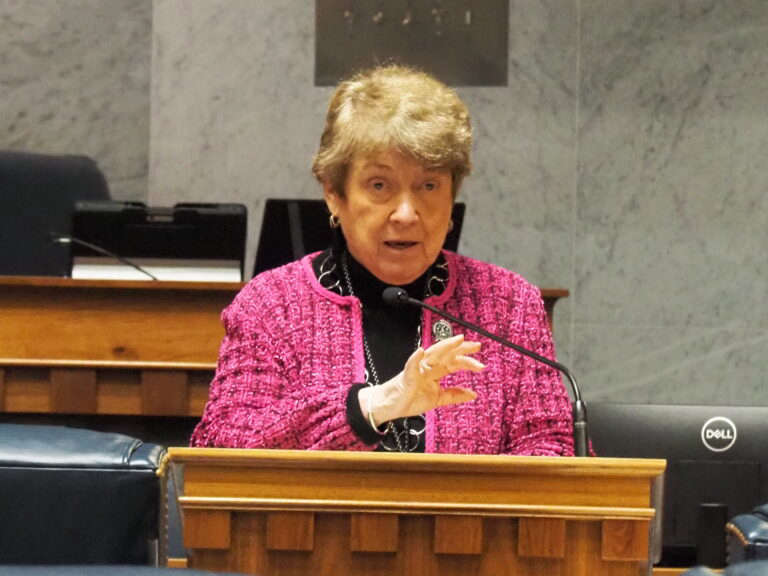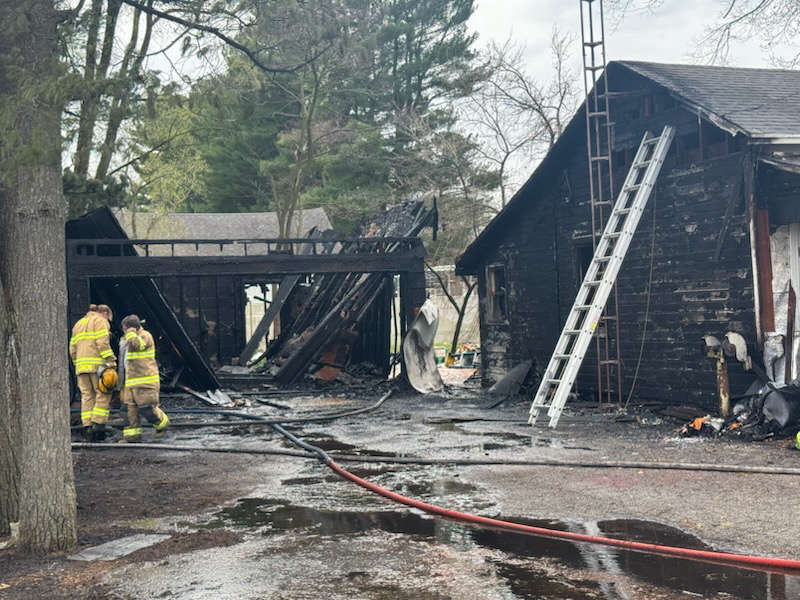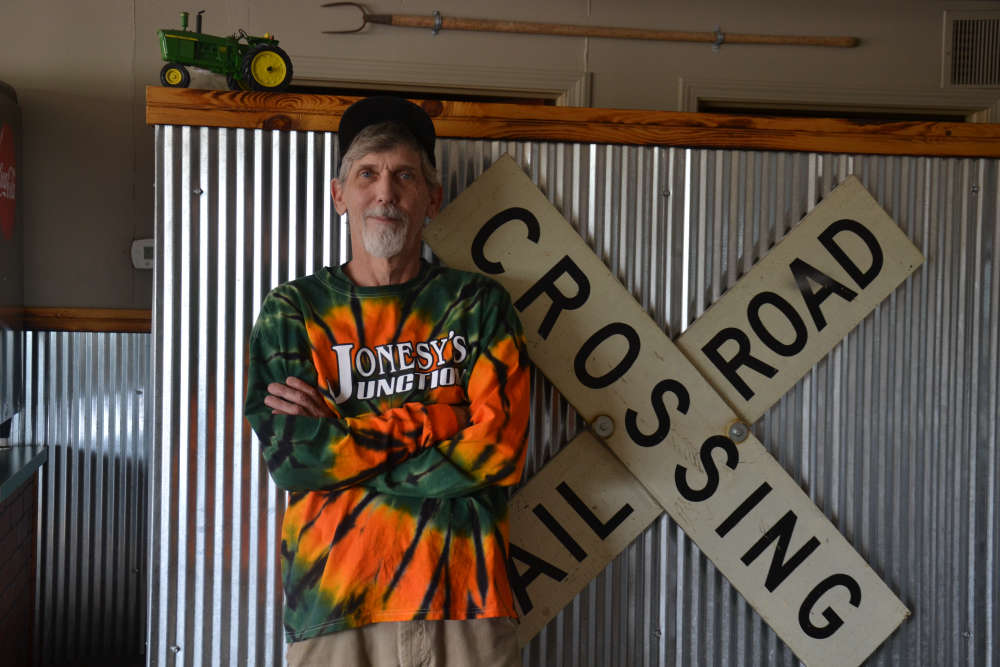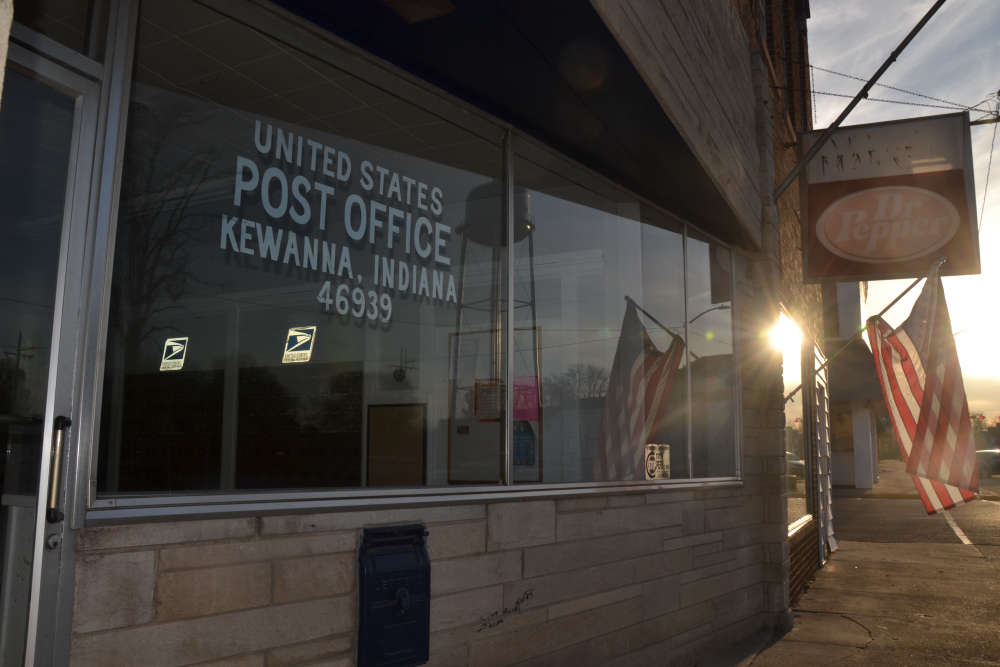
Larry and Susan Jordan purchased the 217-acre farm in 1973 and today work with their son A.J.
The Jordan family from Miami County received the 2024 John Arnold Award for Rural Preservation from Indiana Landmarks and Indiana Farm Bureau, honoring the family’s stewardship of “Old Fashioned Garden,” a historic farmstead southeast of Peru.
The presentation was made at the Indiana State Fair.
Originally part of land deeded by the U.S. to Chief Francis Godfroy of the Miami Nation in 1838, the farm sweeps up from the Mississinewa River, a mixture of rolling farmland and pastures. The Cole family owned the property in the early twentieth century, and likely built the c.1910 gambrel-roof dairy barn that remains on the farm. Songwriter Cole Porter’s step-grandmother Bessie Cole lived at the farm until her death in 1944. The large flower garden she planted on the farmstead is believed to have inspired Porter’s first commercially successful song, “Old Fashioned Garden,” in 1919 and gives the farm its name today.
Larry and Susan Jordan purchased the 217-acre farm in 1973 and today work with their son A.J. to grow soybeans and corn on its tillable farmland, as well as farming an additional 800 acres on nearby farms. The Jordans live in the historic farmstead first built as a log structure in the mid-1800s and later enlarged to the current Colonial Revival-style residence.
They raise livestock in the historic dairy barn, a landmark that in addition to serving various agricultural purposes over the years also hosted trapeze artists from Peru’s amateur circus practicing aerobatics in the hayloft in the 1960s. Today the space is used to store hay and straw for the Jordan’s small herd of Hereford and Simmental cattle, sheep, and a donkey named Barkley. On the lower level, the barn holds livestock pens, farming equipment, tools, and houses the Jordan’s flock of chickens and many barn cats.
Susan Jordan maintains the old-fashioned garden, planting flowers made popular by Porter’s hit song—phlox, hollyhocks, violets, eglantines, columbines, and marigolds—and sharing the garden and song’s origins and the farm’s history with tourgoers during Peru’s annual Cole Porter Festival.
The Jordans are also caretakers and lessees of Butler Township School 11, known as Iddings School, which was built in 1894 on the farm as one of several one-room schools in the township. Consolidation closed the school in 1915, which was later enlarged to become a home.
“My husband and I grew up on farms and I think it’s ingrained in us who do farming that you are stewards and keepers of the land,” says Susan Jordan. “That view moves into how we see our property as well. We were always taught that you maintain what you have, make it better, and leave it better for future generations. When you walk into the barn and see the rafters and the kind of labor that went into making that barn back in 1910, it’s kind of awesome. We want to preserve it for people who might never have thought of how something was put together at that time.”
“The Jordan family’s commitment to maintaining the heritage of this intriguing Miami County farm and making it part of their farming operations illustrates the spirit of the Arnold Award,” says Tommy Kleckner, director of Indiana Landmarks’ Western Regional Office and Arnold Award coordinator.
The annual award is named in memory of John Arnold (1955-1991), a Rush County farmer committed to preserving Indiana’s rural heritage.


 Bill abolishing court positions passes Senate, Pulaski County could lose judge
Bill abolishing court positions passes Senate, Pulaski County could lose judge
 Detached garage fire damages home in Rochester
Detached garage fire damages home in Rochester
 Jonesy's Junction voted best tenderloin in Indiana
Jonesy's Junction voted best tenderloin in Indiana
 City council to consider food truck ordinance
City council to consider food truck ordinance
 ISP: Stay alert and share the road with farm equipment this spring
ISP: Stay alert and share the road with farm equipment this spring
 Kewanna residents gather to share frustration over lack of mail delivery
Kewanna residents gather to share frustration over lack of mail delivery
 Restaurants host fundraisers for local suicide prevention task force
Restaurants host fundraisers for local suicide prevention task force
 Bookings and Blotter – April 17, 2025
Bookings and Blotter – April 17, 2025




